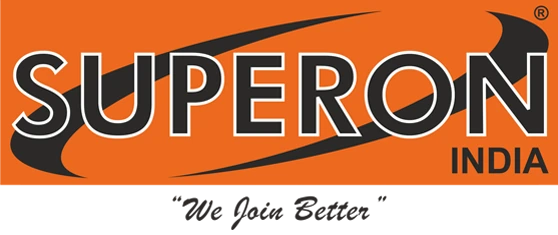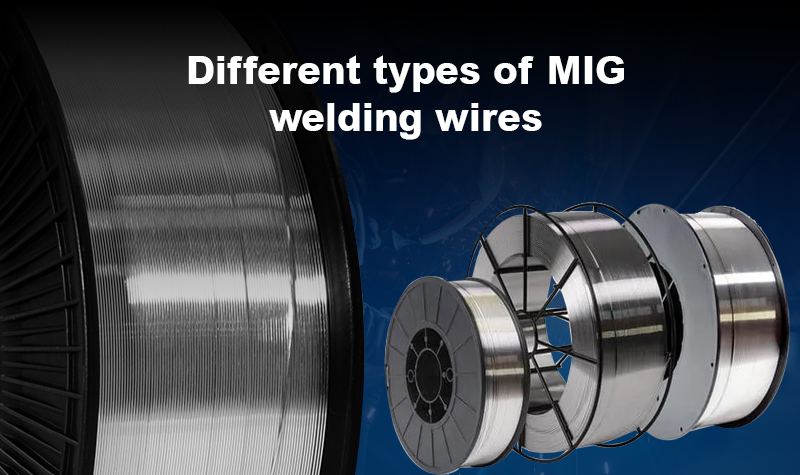A type of welding procedure known as Metal Inert Gas (MIG) welding is highly successful as long as a continuous solid wire electrode is used to obtain a strong and durable weld. With the right choice of MIG welding wire, an outstanding quality can be achieved in the industrial sectors such as construction, automotive, shipbuilding, and pressure vessels. This blog deals with the various types of MIG welding wires, their features, and application.
1. Solid MIG Welding Wire
The solid MIG welding wire is one single, unbroken strand of metal wire. It is probably the most popular and practically applied type of MIG welding wire that is used; it tends to be used mostly when welding steel, stainless steel, and aluminium. Normally, it sells in a spool or coil, while a wire feeder feeds the wire to the MIG welding machine. This is the preferred wire if a clean, high-quality weld is desired.
There are numerous forms of solid MIG welding wires composed of alloys made based on materials that one will weld. One of the Solid MIG Welding Wire Superon has is SUPERMIG 70S-6
- Description: Copper-coated Mn-Si alloy solid wire for CO₂ or Ar-CO₂ welding. Delivers excellent mechanical properties and x-ray quality welds. Ideal for GMAW of unalloyed steels in construction, automotive, pressure vessels, and shipbuilding.
- USP's:
1. Superior weldability with a stable arc
2. Smooth start & trouble-free feeding
3. Minimal spatter & low fume emission
4. Ultra-clean, 100% residue-free wire
Others common types are:
- Stainless steel ER308L, ER309L: These stainless wires are available for specific use to weld stainless steels. Various alloys come along with their application.
- Aluminium (e.g., ER4043, ER5356): Aluminium wire is primarily composed of aluminium and has been formulated to address the adverse properties of having a low melting point and the higher thermal conductivity when welding aluminium.
Benefits:
- Spatter-free, clean Welds: It produces welds that are super clean and very smooth with minimum spatters and with less lost time caused by the downtime.
- Digs in well: Feeds well through the MIG gun, resulting in stable arc and less lost time caused by the downtime.
- Versatility: Solid MIG wire is versatile since it can be applied in several applications, as it penetrates very easily into both thick and thin materials.
2. Flux-cored MIG welding wire
Flux-cored wire looks exactly like solid wire except it has an inner hollow core that contains flux. Flux protects the weld from contamination by elements that might be present in the air, thus covering the molten pool.
Types of Flux-Cored Wires:
- Self-Shielded (FCAW-S): The flux within the wire produces its shield as it burns; hence, this wire doesn't need any outer shielding gas and ensures an excellent out-of-door application for welders or even those who end up working in windy conditions.
- Gas-Shielded (FCAW-G): As in the case of solid wire, it still requires an outer shielding gas but offers a much higher deposition rate and penetration.
Advantages:
- Better penetration: Flux-cored wire penetrates deeper into the base material, so it is great for thicker materials.
- Higher deposition rate: It can deposit more material in less time compared to solid wire, so economical for heavy-duty applications.
- Outdoor welding: Self-shielding flux-cored wire can be welded outdoors or else at places where the wind may blow the shielding gas off from the solid wire.
3. Stainless steel MIG welding wire
Stainless steel MIG wire is particularly prepared for stainless steels and their alloys to be welded. This wire comes in different grades depending on each type of variation in stainless steel: 304, 316, and even 309. One of SS MIG welding wire Superon has: SUPERMIG 308L
SUPERMIG 308L has been formulated for MIG welding applications and it is particularly suitable for welding AISI types 301, 302, 304, 304L, 308, and 308L austenitic stainless steels. Its low carbon content value and composition of 20Cr/9Ni make this filler wire free from carbide precipitation, guaranteeing both corrosion protection and welded joint quality.
- Size Range: 0.60 mm to 1.60 mm (0.025” to 0.062”)
- Finish Options: Bright Finish, Matte Finish, Semi Bright/Matte Finish
- SUPERMIG 308L assures stable consistent weld quality and smooth performance ideal for critical industrial applications such as food & beverage equipment, chemical tanks, and architectural applications.
Advantages:
- Corrosion Resistance: Fit-in for the processes being conducted in heavy weather conditions.
- High Strength: It has incomparably better mechanical characteristics which can be easily welded and very resistant to wear.
4. Aluminium MIG welding wire
It is harder to weld because of low melting point and due to the presence of great high thermal conductivity. In general, wires of aluminium have alloys affiliated to various aluminium components.
Common Alloys:
- 4043: It has good weldability with resistance to cracking:
- 5356 is a high-strength aluminum alloy ideal for applications requiring durability and structural integrity, especially in welding.
Advantages:
- Corrosion Resistance: The best choice for ship and airplane building in which corrosive substances like sea water and the oxygen of the air act as catalysts in the reaction with the metal.
- Lightweight: By reducing the weight of automotive and building materials to a minimum, it is possible to achieve the so-called lightweight construction.
- High Conductivity: The low mass and punch-resistant features of alkaline-based MIG wires make aluminum the most recommendable material for both aerospace and marine applications particularly. Most applications of these wires that are made of aluminum use the Argon gas that has a content level of not less than 100% (Optimum).
5. Copper MIG Welding Wire
It is commonly used mainly because it is a good conductor of electricity and heat and does not easily corrode.
Advantages:
- High Conductivity: It is extremely electrically and thermally conductive, thus making the material highly applicable for electrical and heat transfer applications.
- High Resistance: It also shows a high corrosion resistance, especially in a marine or chemical environment.
6. Double-shield MIG welding wire
A dual-shield MIG wire is a crossbreed type of wire that incorporates properties acquired from both solid wires and flux-cored wires.
Advantages:
- Higher Deposition Rates: Dual-shield wire allows for a higher deposition rate along with penetration.
- Higher Strength: Flux-Gas Shielding Mixtures welds are more robust.
7. Low-alloy MIG welding wire
The low-alloy MIG wire for the low-alloy steels in welding. In most cases, these are higher carbon, manganese, or other elements in low-alloy steels as a strength and toughness requirement along with resistance to wear.
Advantages:
- More strength: It has more toughness, impact, and fatigue resistivity compared to regular mild steel wires.
- Better Resistance to High Temperatures: Some low-alloy wires are good for high temperature applications. These low-alloy wires give better strength for heat as compared to mild steel.
Conclusion
MIG welding wire available for choice is according to the type of weld that is targeted, and so different types include solid MIG wire that applies to mild steel and stainless steel, while the flux-cored wire can be very versatile for outdoor applications. Sometimes specific stainless and aluminium wires may be applied in certain areas, such as food processing, aerospace, etc. There can also be low-alloy wires and dual-shield wires and, as necessary, other benefits according to specific applications.
Also Read: Superon: Your Ultimate Source for MIG and TIG Wires

